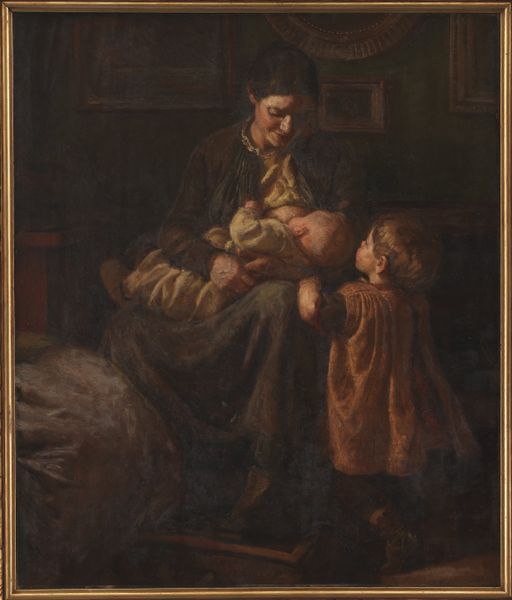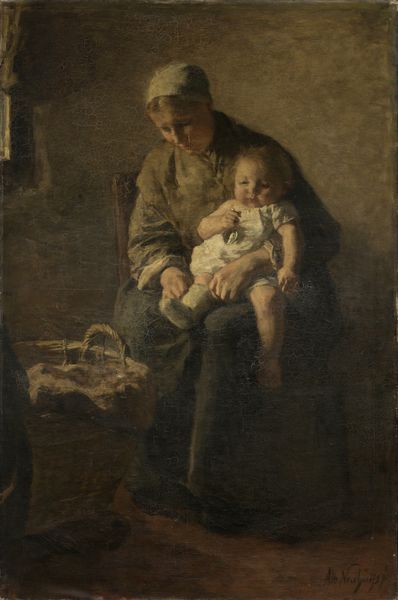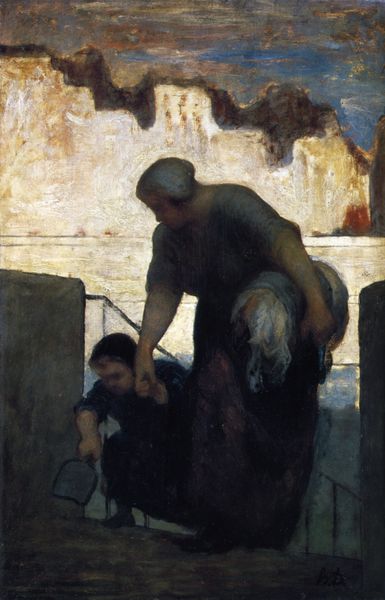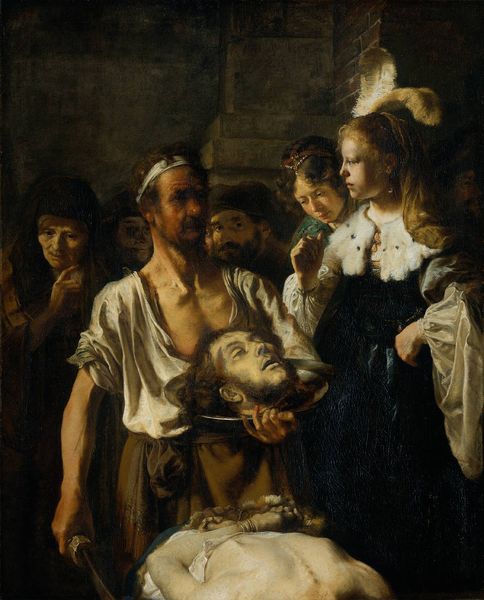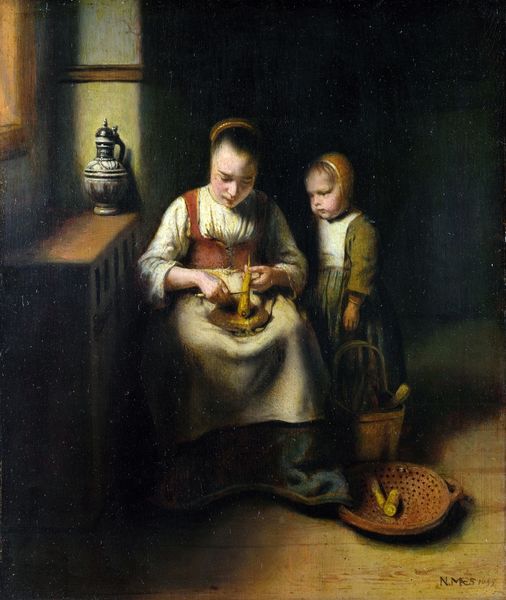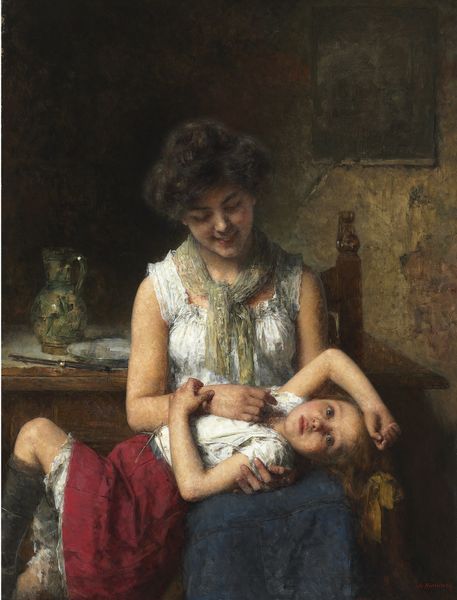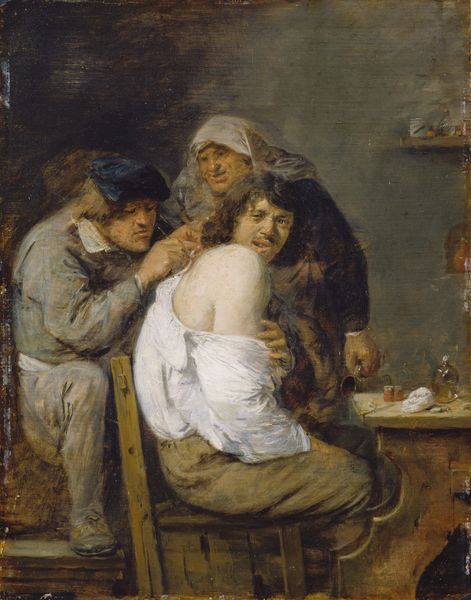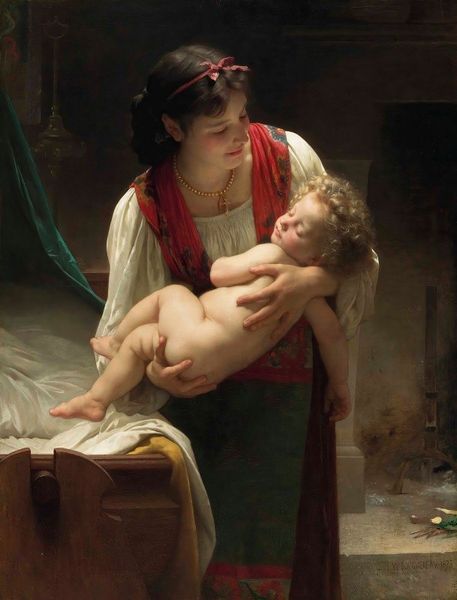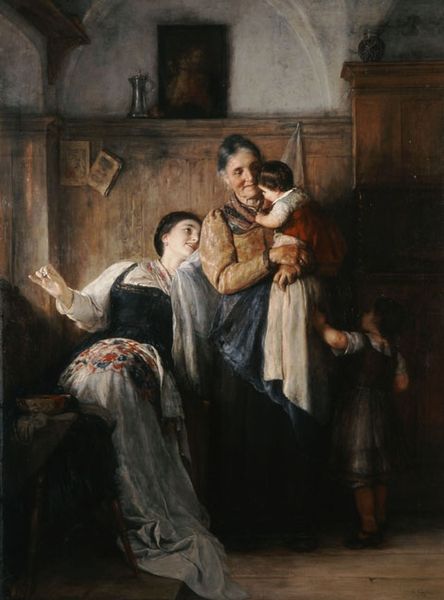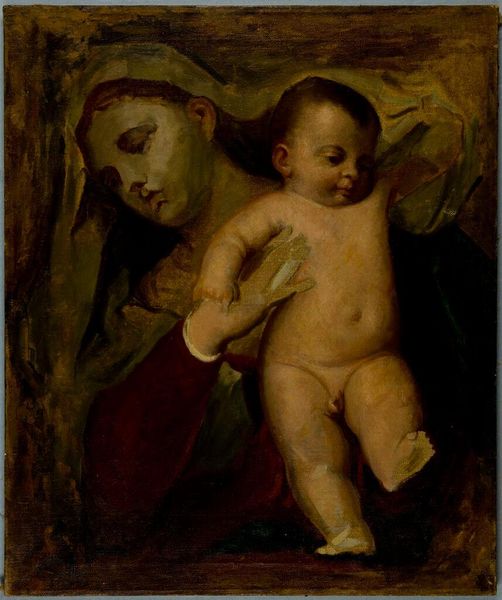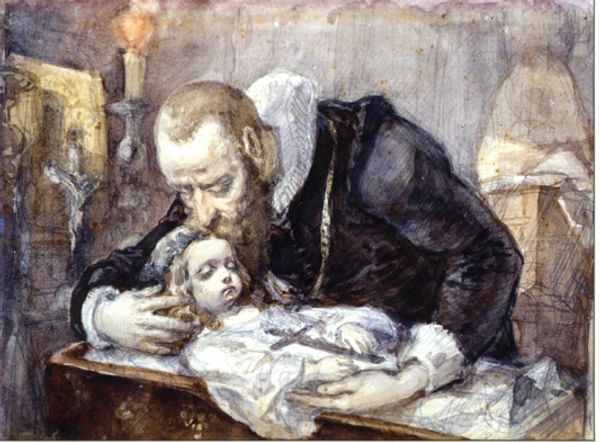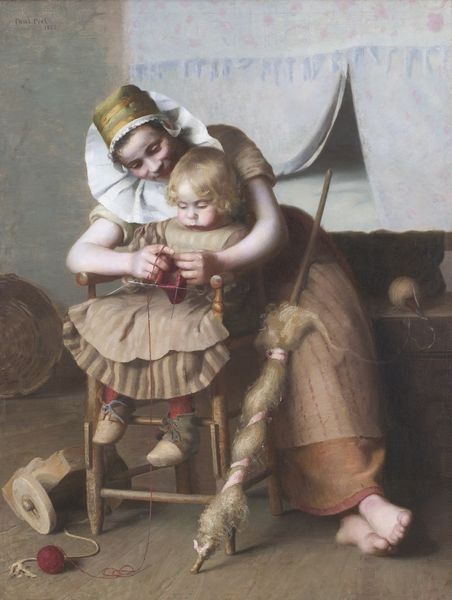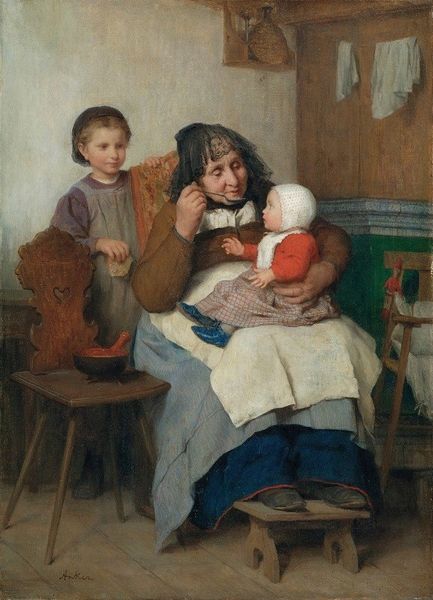
painting, oil-paint
#
portrait
#
narrative-art
#
painting
#
oil-paint
#
genre-painting
#
realism
Copyright: Public domain
Editor: This is "Cold Shower," an 1898 oil painting by Georgios Jakobides. The child's red, tear-filled face contrasts so strongly with the somber mood suggested by the muted colors... what do you see in this piece? Curator: Immediately, the keys hanging from the woman's apron become a powerful symbol. They signify not just access to spaces, but control over the child's environment and experience. How might that relate to the overall narrative? Editor: It suggests she's in charge, responsible. The child's discomfort is secondary to her duty, perhaps? Curator: Precisely. Consider, too, the cultural memory of bathing – traditionally, purification, a ritual cleansing. Yet, here, it’s clearly traumatic for the child. That duality – purity versus distress – plays on a deeper symbolic level, touching on ideas of discipline, innocence, and the loss thereof. Do you pick up on that tension? Editor: I see it now! The bath is meant to be cleansing, but it's causing distress. So the image isn't just about a bath, it is also a sort of initiation? Curator: Precisely. Think also about how often children crying have been depicted throughout art history. Artists often invoke emotional response through images like this one, don't they? Editor: Yes! This piece now resonates with the many artistic depictions of childhood, innocence and also their fragility. It's amazing how a single painting can speak to so many layers of meaning. Curator: Indeed. Every visual element serves to construct a more profound narrative, touching on universal themes of control, purification, and the pain of growing up.
Comments
No comments
Be the first to comment and join the conversation on the ultimate creative platform.
